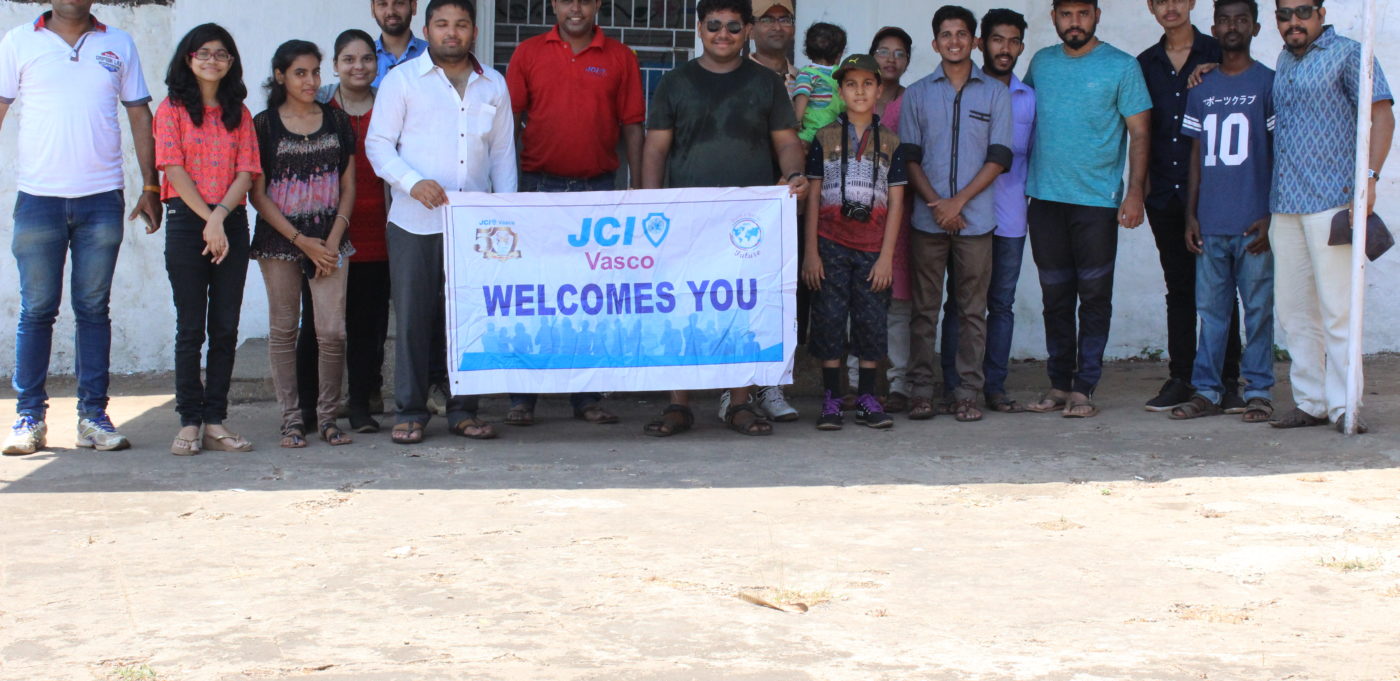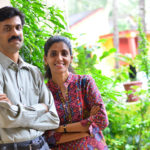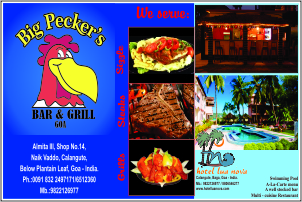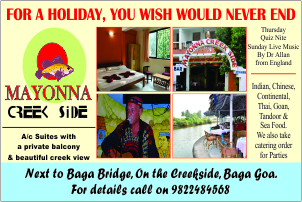Goa has a rich and diverse heritage in the form of archeological sites, temples and churches. Since times immemorable, Goa has been attracting dynasties, seafarers, merchants, traders, missionaries etc. and this has left behind a rich historical heritage. Unfortunately the new generation have less knowledge of our history.
To educate the people of Goa, we have a group of youngsters who have come together and formed the “History Lovers Group” and have been organising trips to archeological sites and historical monuments to educate the society.
A group of young & dynamic history enthusiasts from “History Lovers Group” (HLG) in association with JCI, Vasco organised “Mormugao Heritage Trip” for general public on Sunday 30th April in order to create awareness about the rich history and heritage of Vasco da Gama.
Rohan Bandekar an energetic youth from Vasco who is also an active member of HLG gave out an informative historical detail on the trip.
The trip start point was at Desterro Fort where the participants witnessed the 393 years old fort wall still standing rock solid. Desterro chapel was also the main attraction at Desterro fort. Further, the trip moved at Mormugao Fort which was built in 1624.
The construction of the historic Mormugao fort commenced in 1624 when king Dom Filipe ruled Portugal and Dom Fransisco da Gama, the great grandson of Vasco da Gama the famous Portuguese explorer, was the Viceroy of Portuguese India for the second time . The fort was about 9km in circumference, it contained towering bulwarks, three magazines, five prisons, a chapel quarter for guards, 53 guns and a garrison with four officers. The Viceroy’s palace which is currently with the MPT was later converted into hotel Palacio, later given to British shipping agents for their offices.
In 1683 when Maratha king Sambhaji reached St. Estevem also known as ‘’Juve’’, due to the fear of Sambhaji’s attack , the Viceroy of Portuguese India then Dom Fransisco de Tavora who was given the title of Cond de Alvor by the Portuguese king shifted his capital from Old Goa to Mormugao.
Today we can see the fort with cross and chapel of Nossa Senhora de Piedade, remains of the fort wall can be seen from the Japanese garden, garbage treatment plant Sada and NCAOR complex. A bastion like structure can also be seen along with some remains of the fort at Baina beach. The Desterro fort wall extends from where the Desterro church stands near the Baina beach at one end and towards the El- Monte theatre from the other end. The historic Desterro fort wall needs urgent attention as the vegetation grown on it needs to be cleared.
The market building which has a clock tower was built in 1938 and was known as ‘’Mercado municipal,’’ which means municipal market. The restoration of the clock tower has been done by Rajaram and Tarabai Charitable Trust of RNSB group.
The current Mormugao Municipal Council building which is also a heritage structure was built in 1941. The ‘’Camara Municipal de Mormugao’’ was established in 1919 with Antonio Vicente Valente de Braganca Cunha as its first president. Its administrative offices operated from the Colaco building which was demolished in 1964 and replaced by a new concrete building where the Bank of India Vasco branch is located today. In the year 1941 the offices of Camara Municipal de Mormugao were shifted to the present Mormugao Municipal council building.
The trip came to an end at St Andrews Church. The Church of St. Andrews the Apostle was established by the Jesuits in 1570. The present church building dates back to 1594, having gone through structural changes over the years.
The History Lovers Group will be hosting many similar events in all parts of Goa to take history towards the general public of Goa.
Team TNV



























